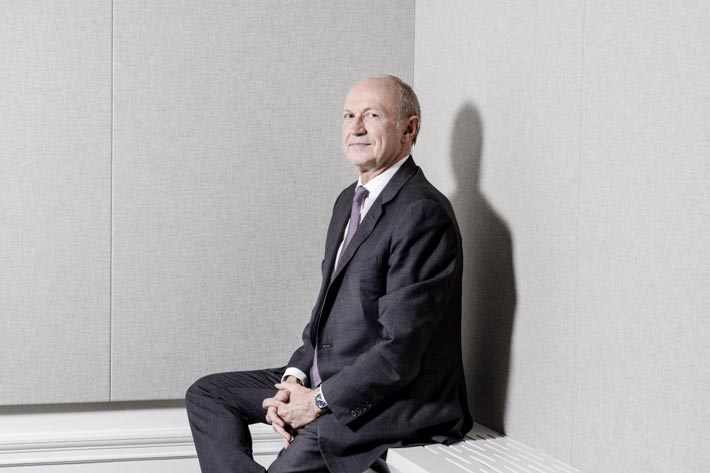L’Oréal, with its omnipresent television and print advertising and aura of history and glamour, is arguably one of the world's most recognizable consumer brand names.

So it’s east to forget that L’Oréal, the company—a 108-year-old French powerhouse with $28.6 billion in revenue in 2016—is more like a beauty conglomerate than a single centralized company. The company owes its steady recent growth—sales have risen more than 70% over the past decade—in part to a healthy appetite for acquisitions.
Late last month, CEO Jean-Paul Agon sat down with Fortune to talk about the “organized chaos” of L’Oréal’s evolution. Edited excerpts follow; a longer edit of the interview can be found here.
Fortune: L’Oréal has been historically more successful at buying versus building...
Jean-Paul Agon: No, no, no, no, no. There is no contradiction between both. The L’Oréal model is, today we have 30 brands. Some of these brands do three, four, five billion in sales, some are smaller, but all of these brands except one have been acquired. So our model is and has been for 50 years to buy a brand at an early stage that we think can become a global successful player.
Kiehl’s we bought in 2000. The business was $20 million [annually]. It was a store on 13th St. [in New York City] and a few counters at Saks. Then for 17 years we have built the business of Kiehl’s, and now it is a $1 billion business. So the way we grow is exactly this combination of buy and grow. Its not buy or grow. And that’s what we do every year. Once the brands have been acquired, they are brands that we build.
You’ve also used acquisitions to get into new categories, which can be a risk. The company has taken writedowns on Clarisonic [it acquired parent company Pacific Bioscience Laboratories in 2011] and Magic Holdings [the skin mask company it acquired in 2014].
These were not our most successful ones. But we have to accept the risk. The purpose of some of these acquisitions is to be able to make sure that we compliment the portfolio we have and the category we’re in, and also that we prepare for the future. Some of these have been immensely successful, and many of them are American. Thirty percent of our business worldwide is American brands and America by far is our largest market. NYX [a professional beauty product brand] is three to four times above its plan and Urban Decay [a cosmetics brand] is three times above plan.
Some have been less successful but are still interesting. Clarisonic was, in a way, a more risky acquisition because it is not a typical cosmetic product, it’s a [skin-care] device. But we believe in a few years from now, cosmetic devices and beauty devices will definitely be an important market, so we had to be there. So we are learning the market thanks to Clarisonic. For a while, it will be more difficult than we expected, but I still believe that it’s a very important strategic move and that also … we have to explore these other categories.
What other categories are you looking at?
You know that I can’t answer that, because the price of these targets will immediately rise. If anyone in the world wants to sell a beauty business, the first people they will call is us. So we are looking every year at every opportunity, and continue to. Makeup, skin care, hair care, hair color – everything.
You also have an acquisitive competitor [Estée Lauder]. Besides money, what can you offer acquisition targets to entice them to sell to you?
We offer them the total respect of the identity, culture, spirit and soul of the brand. When you go to a Kiehl’s store today anywhere in the world – in Korea, China, France, Argentina – it is exactly the replica of the spirit, of the soul, of the identity, of the Kiehl’s store we bought years ago. We have been more than loyal and cultivated the spirit of the brand. Except that now it’s a $1 billion brand.
This is very important if you are an entrepreneur and you want to pass the baton to someone else. And that’s what we guarantee. Look at Urban Decay – the creators of that brand are still with us, and managing the business.
In recent years, you were bullish on turning around The Body Shop, a retailer L’Oréal acquired a decade ago. In February you put it for sale. What changed?
What changed is we tried. We tried and tried and tried. And maybe in this case – we are being too loyal to the brand’s spirit, and because we didn’t want to change too much, in fact, we didn’t change enough. This is always a difficult balance. I still think it’s a beautiful brand—great awareness everywhere in the world—but maybe someone else can do something better with it.
It’s surprising, given The Body Shop’s brand of natural, eco-friendly products has become more relevant and mainstream in the last ten years.
You’re right, that’s true. But maybe also because it has become more mainstream, it’s less unique. There is always a flip side.
Source: http://fortune.com
